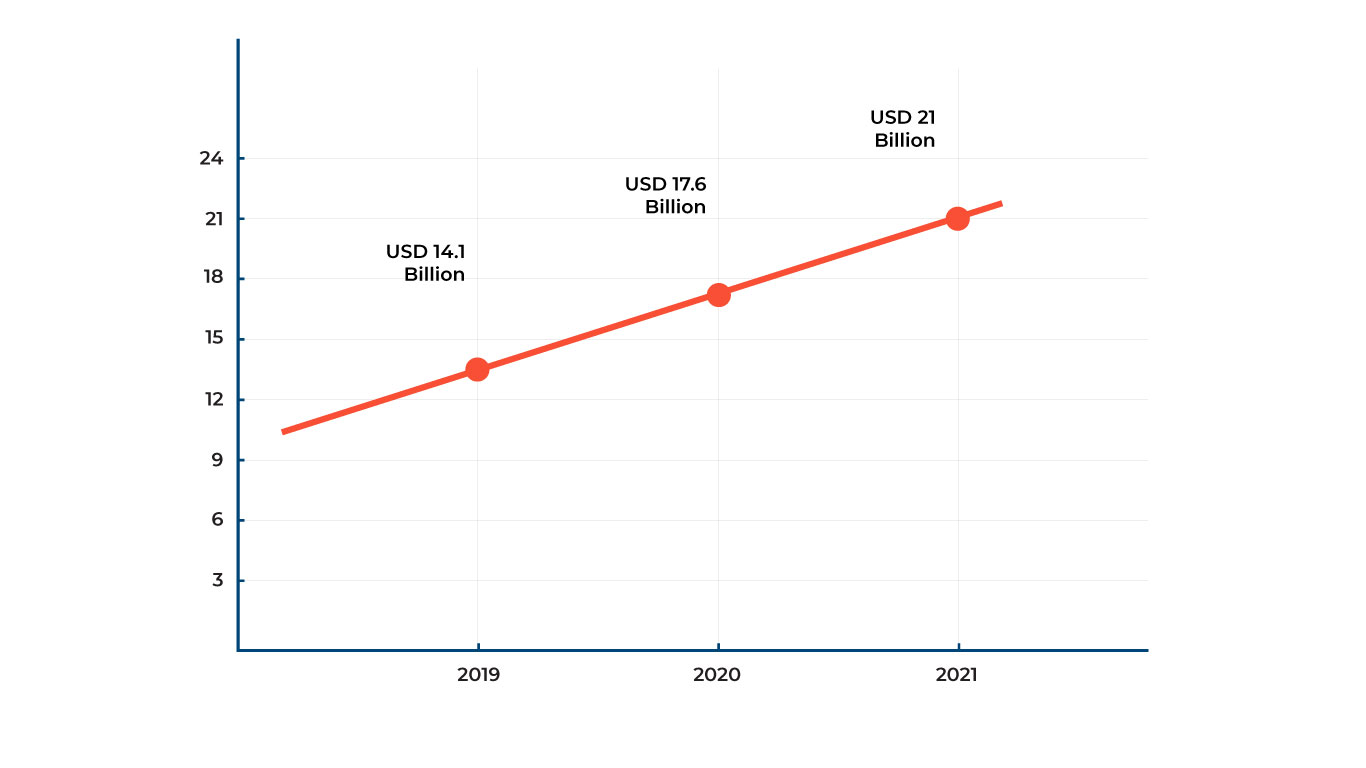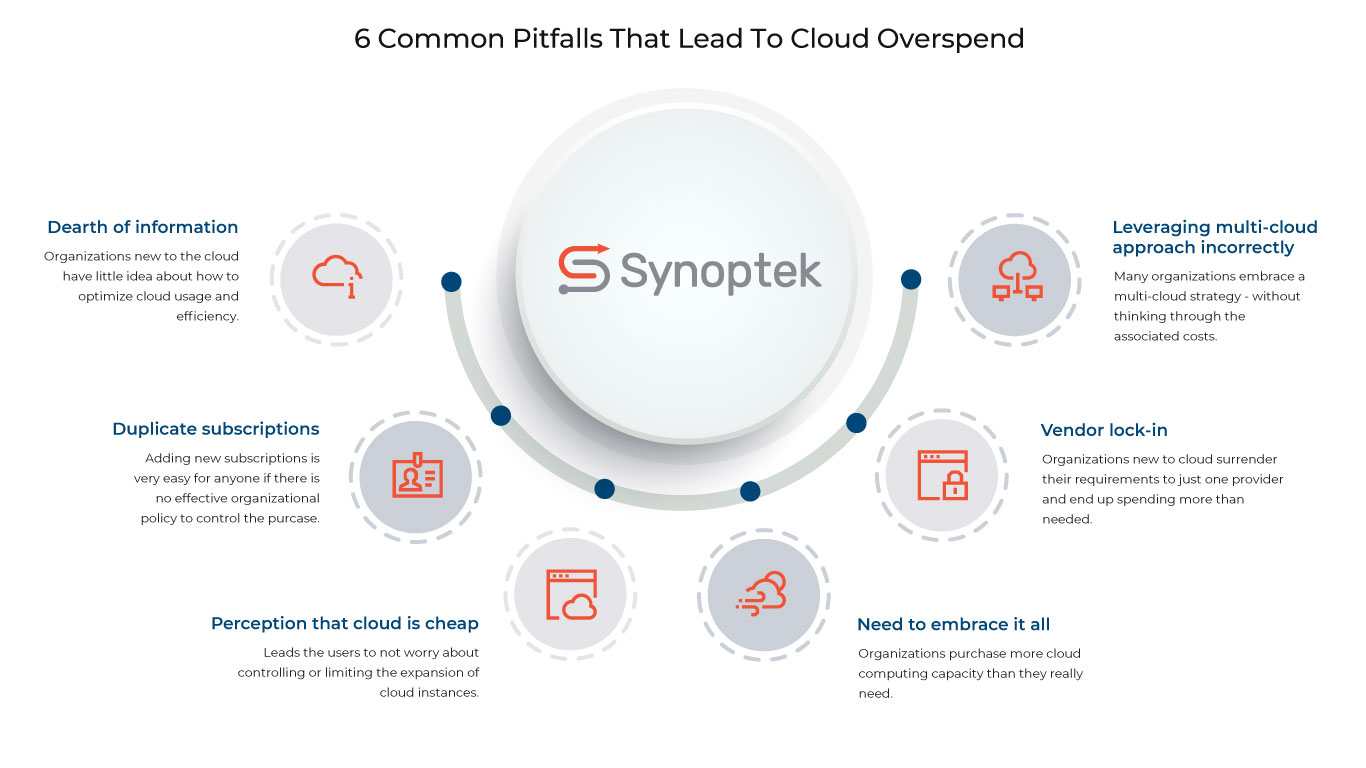November 3, 2020 - by Synoptek
There’s no doubt about the fact that a lot of money is flowing into cloud services. A report from Research and Markets says the global cloud computing market is expected to grow up to USD 832.1 billion by 2025. According to the ninth annual Flexera 2020 State of the Cloud Report, 59 percent of organizations are expected to increase cloud usage due to COVID-19. However, with growing cloud usage, there is a high likelihood that organizations will struggle to get a handle on their increased cloud expenditure. By 2021, cloud waste is expected to increase by $21 billion in 2021.

Project cloud waste from 2019 – 2021 by ParkMyCloud, a Turbonomic Company
The biggest reason why cloud waste is high is that many organizations don’t clearly define what they want to achieve on their cloud journey. Many times, organizations choose to embrace the cloud and spend a lot of money buying a bevy of features they never use is because there is pressure to embrace the cloud as fast as possible. Let’s understand in detail the most common pitfalls that lead to cloud overspend.
1. The Perception that the Cloud is Cheap
Cloud vendors and even tech experts worldwide have long been classifying cloud as affordable and economical for big and small organizations. This perceived notion causes businesses (and their users) to not worry about controlling or limiting the expansion of cloud instances.
Because vendors have made it so easy for anyone with a credit card to set up a cloud server in seconds, cloud usage and its gradual expansion largely remain unchecked. This makes it extremely hard for organizations to understand cloud expenses and spot duplicate or redundant subscriptions – especially in the absence of accurate and timely reporting to view and adjust their expenditure.
2. The Pressure to Embrace it All
For organizations who are new to cloud optimization, just the idea of embracing a bevy of cloud features proves to be very costly. In the eagerness of moving to the cloud, they purchase more cloud computing capacity than they really need. Such companies also spend a lot on disaster recovery strategies and purchases of advanced reserves they never use.
Also, most employees believe that the more applications they use, the more efficient and productive they will become – resulting in more and more cloud apps and solutions being used. While these costs might not seem high, when looked at from a short-term perspective, they often translate into hundreds of thousands of lost dollars.
3. The Problem of Duplicate Subscriptions
The excitement of embracing a “trending” technology that everyone is talking about means several people will be purchasing or subscribing to cloud services on behalf of their roles of departments.
This often results in duplicate subscriptions or subscriptions that aren’t really needed. Add to it the melee of automatic subscriptions that become an indispensable part of annual billing that nobody uses. With how easy cloud vendors have made it for administrators or even regular employees to add licenses, users, or subscriptions, the number of cloud licenses and application usage keeps increasing without a check.
4. The Issue with Vendor Lock-in
For organizations opting for IaaS services, the problem of vendor lock-in is also widespread. Most organizations, new to the concept of cloud optimization, surrender their requirements to just one provider who acts as a one-stop-shop to meet all their cloud needs.
However, when they realize they’re spending way too much money on infrastructure, it’s already too late to switch or opt-out. Since most of the solutions from a vendor have been architected for one particular cloud and one specific set of cloud features, it becomes very difficult to migrate to another.
5. The Plain Dearth of Information
Organizations that are new to cloud optimization have little to no idea of where and how tweaks can be made to optimize cloud usage and efficiency. As they set out to procure new services, they often overlook hidden costs in their pricing models – costs for various API calls and other transactions are often too complicated for a newbie to understand.
Only when the organizations start using the cloud, do they realize that some of those services are the highest contributors to their monthly spending. Since most cloud services are available at the click of a mouse, organizations provide many services but often forget about them later. Such unused resources can result in wastes of thousands of dollars.
6. The Repercussions of a Multi-cloud Approach
As the multi-cloud approach is becoming popular, many organizations embrace it – without thinking through the associated costs. Mid-size to large companies use an average of eight different cloud providers for various enterprise apps and services.
The use of multiple public and private clouds for different workloads, in addition to the simultaneous use of on-premise infrastructure and multiple public clouds, make management extremely complex.
In a bid to safeguard data and take advantage of different services offered by different clouds and vendors, organizations end up overshooting their cloud budgets. Staffing for multi-cloud is often an expensive endeavor, and heavy investments have to be made to execute the multi-cloud strategy properly.

Optimize Your Costs
The growth of the cloud has been phenomenal, and for a good reason. Gartner predicts the global market for cloud services to reach $331.2 billion by 2022. However, as the idea of just paying for what you use is so enticing, organizations end up spending a lot more money than required.
In the absence of the right cloud cost optimization tools, they also lose track of cloud spending across an increasingly disparate range of suppliers and vendors. While shifting to the cloud might not necessarily cost your organization more, it makes costs less predictable (and controllable) than age-old long-term licensing models.
What is needed is for organizations to carry out frequent cost optimization assessments and invest in the right cloud cost optimization tools to shut down unused workloads, select only the services they need, and control and optimize cloud spend.
Download this FAQs sheet to learn how you can gain control over your cloud overspend.
Contact us to learn more about which cloud optimization options are right for your business.
